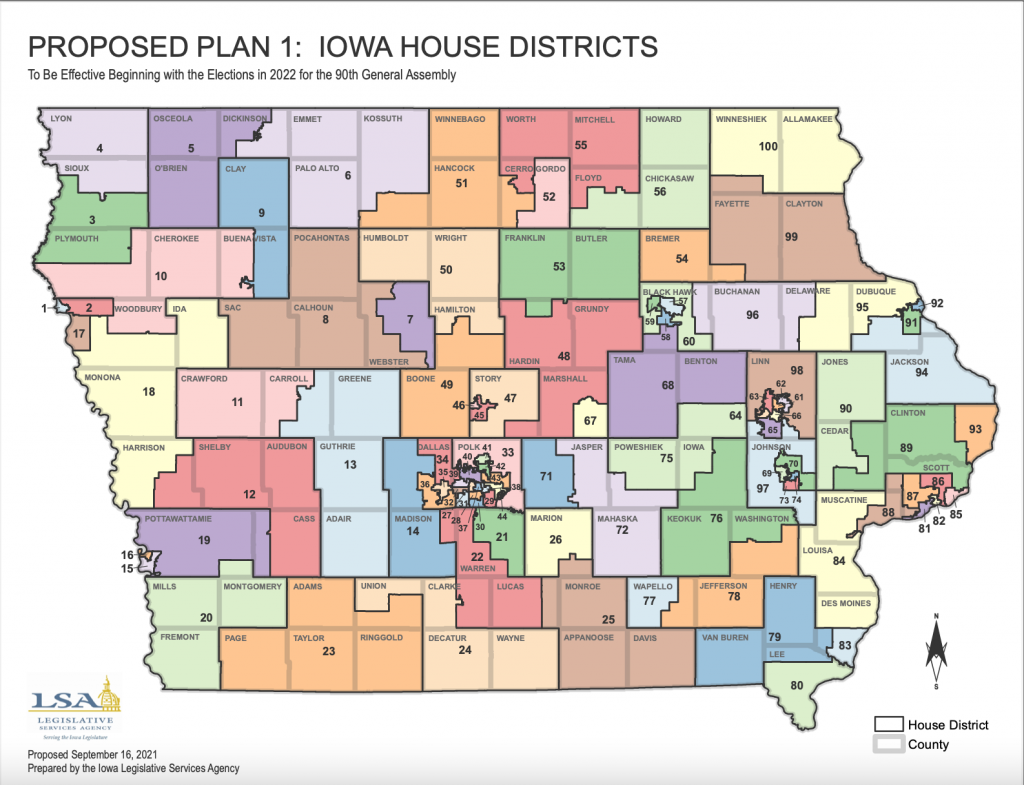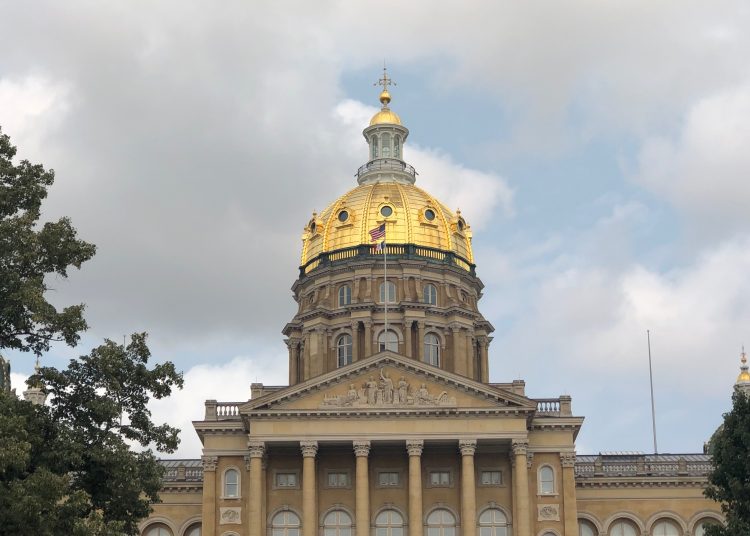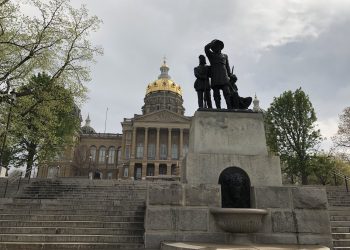DES MOINES, Iowa – The Iowa Senate voted 32 to 18 along party lines to reject the first redistricting plan provided by the Legislative Services Agency (LSA) on Tuesday, the first day of the special legislative session.
“Iowa has a good redistricting process and by requesting a second map, the Senate has continued to follow that process today. Senate Republicans believe LSA can improve the compactness and population deviation of several districts by developing a second redistricting plan,” Iowa Senate Majority Leader Jack Whitver, R-Ankeny, said in a released statement.
Iowa Senate President Jake Chapman, R-Adel, echoed Whitver’s remarks.
“I am hopeful LSA will improve on the first map to address the Senate’s concerns of compactness and population deviations. We will continue to follow and utilize Iowa’s longstanding process for adoption of the maps,” he said in comments provided to The Iowa Torch.
SJR 9, a resolution providing feedback to LSA, passed 32 to 18, requested a second plan that “balances compactness with the legally mandated population deviation.”
The ideal population for each of Iowa’s 50 Senate districts is 63,807 persons and for each of Iowa’s House districts is 31,904 persons. Districts are not to supposed to deviate by more than one percent of the ideal population. According to Iowa law, the Iowa Legislature has the burden of proof to justify any district that varies from the ideal population for that district by more than one percent.
Redistricting by Iowa Code and Constitution is supposed to respect political subdivision. For instance, Article III, Section 37 of the Iowa Constitution states, “…no county shall be divided in forming a congressional district.”
With Iowa Senate and House districts, it is more complicated. The number of cities and counties divided among more than one Senate or House district shall be as small as possible. When there is a choice between dividing local political subdivisions, the more populous subdivisions shall be divided before the less populated except for when a county line divides a city.
The Iowa Constitution and Iowa Code require districts to be contiguous territory. No part of a district can be entirely separated from another part of a district. Districts should be reasonably compact and not irregularly shaped to the extent permitted by natural or political boundaries.
LSA has 35 days to submit a second plan.
Democrats accused Republicans of taking steps to “rig the election.”
“Breaking with decades of non-partisan redistricting tradition, today Iowa Republicans took a big step closer to rigging Iowa elections. The reasons given by Republicans today ignore Iowa law and demonstrate that there was no legitimate reason to reject this first map,” Iowa Senate Minority Leader Zach Wahls, D-Coralville, said in a tweet in response to Iowa Senate Republicans rejecting the first map.
“This was a fair map drawn by the nonpartisan, independent commission. It met all the requirements laid out in state law. This is an outrageous use of political power to rig elections in their favor. We are in completely uncharted territory, due to unprecedented delays,” he added.
“This is a clear signal Republicans are willing to use a partisan gerrymander to keep themselves in power. Now is the time for Iowans to make their voices heard, contact their legislators, and demand that Republicans stop going down this dangerous road,” Wahls concluded.
Twenty-two incumbents (14 Republicans, 8 Democrats) in the Iowa Senate were pitted against one another in ten districts. Only two districts in the first map pitted Democrat and Republican incumbents against one another.
State Senator Tony Bisignano, D-Des Moines, the ranking member of the Senate State Government Committee, told The Iowa Torch that as rural Iowa shrinks, districts in those areas will be larger with greater potential for incumbents to be drawn into the same district.
“There are pairings of senators together on both sides. And we just felt that the bureau who drew it was done nonpartisan bureau, they didn’t know where we live, they didn’t know our parties, they didn’t know the voting patterns. They looked at geography and population and tried to make them as is consolidated as a district and geographically as tight as they possibly could,” he said during a phone interview.
“Iowa’s lost population, the vast majority of the counties and cities, naturally, you’re going to see a population shift to the urban areas, and rural Iowa is going with less population are going to have to expand districts. That’s just common sense,” Bisignano added.
He said that the second plan would have incumbent pairings, and he believes that Republicans will likely reject that plan. Bisignano said he believes that Republicans plan to wait until the third plan is released to offer amendments. Iowa law prohibits amendments to the first and second redistricting plans.
“That will allow the House and Senate to redraw the state boundaries, based on their goals, which is to maintain their leadership, to maintain their majority,” Bisignano asserted.
Not every Democrat agreed with the map.
State Rep. Steve Hansen, D-Sioux City, expressed concern about the compactness of some districts during his point of personal privilege in the Iowa House chamber on Tuesday.
“There is a little discrepancy that I have a problem with in Sioux City. And if we represent our district, there (are) two things: one, I think the population of Sioux City warrants, I don’t think it’s compact the way the map is drawn now,” he stated.
Hansen pointed out that incumbents thrown together into a district was not the problem as that didn’t happen to any state senators or representatives in that area. Still, with a population of 85,000, he said Sioux City should have two, not just one, dedicated house districts.
“So I don’t think the LSA quite caught that. And the same way with the Iowa Senate District. It’s conceivable both districts could be represented from a rural district and not anybody in Sioux City. I just don’t think that’s right. So if there’s a silver lining to having a turndown in the Senate, it’s that perhaps LSA can take another look closer look at Sioux City. I looked at some of the other maps I thought there were some odd configurations,” he added.
Speaker of the Iowa House Pat Grassley, R-New Hartford, said the Iowa House of Representatives would not consider the first redistricting map since the Iowa Senate rejected it.
“As the Senate has voted down Senate File 620, the House will no longer take action on the companion bill today. As I have stated previously, I believe these maps to be fair maps for Iowa. However, I don’t believe the Senate’s concerns with compactness and population deviation are unwarranted. I am hopeful that LSA will produce a map that improves upon the Senate’s concerns and meets all of the other criteria for a fair map outlined in Iowa Code,” he said in a released statement.
Grassley added that consideration of a second map is not unprecedented, “Going to a second map is not unprecedented and we are still following Iowa’s gold standard redistricting process. We have worked to maintain the integrity of redistricting process in Iowa and will continue to do so. Iowa House Republicans stand ready to do our due diligence to ensure the second set of maps is a fair map for the people of Iowa.”
Both chambers adjourned until the release of the second redistricting map.
As reminder here are the maps that were rejected along with our analysis:
Congressional District Map
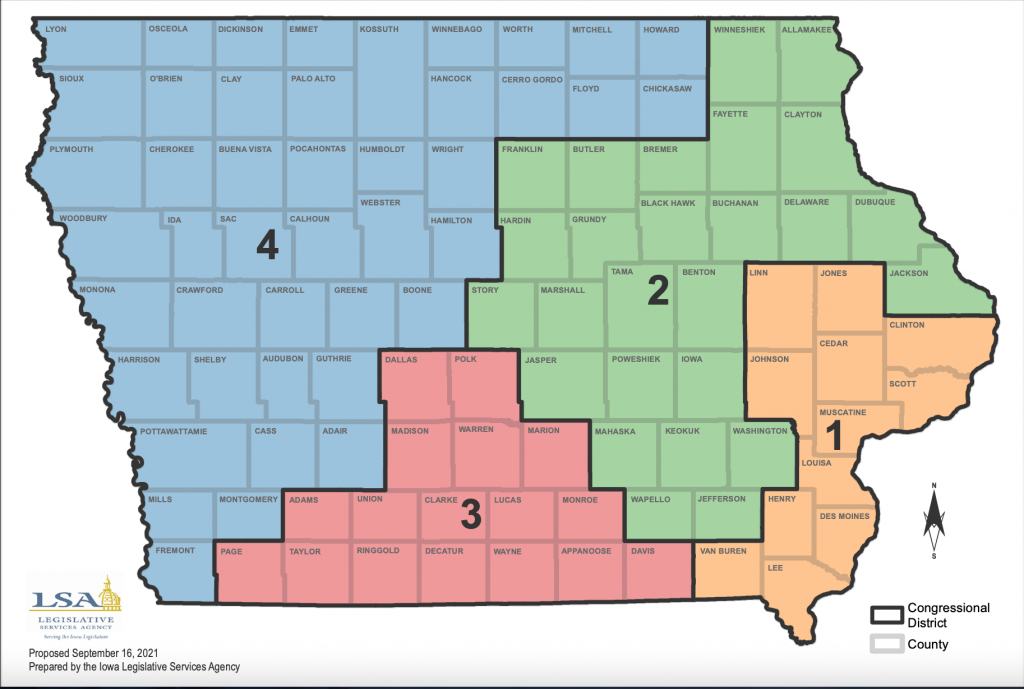
Iowa Senate District Map:
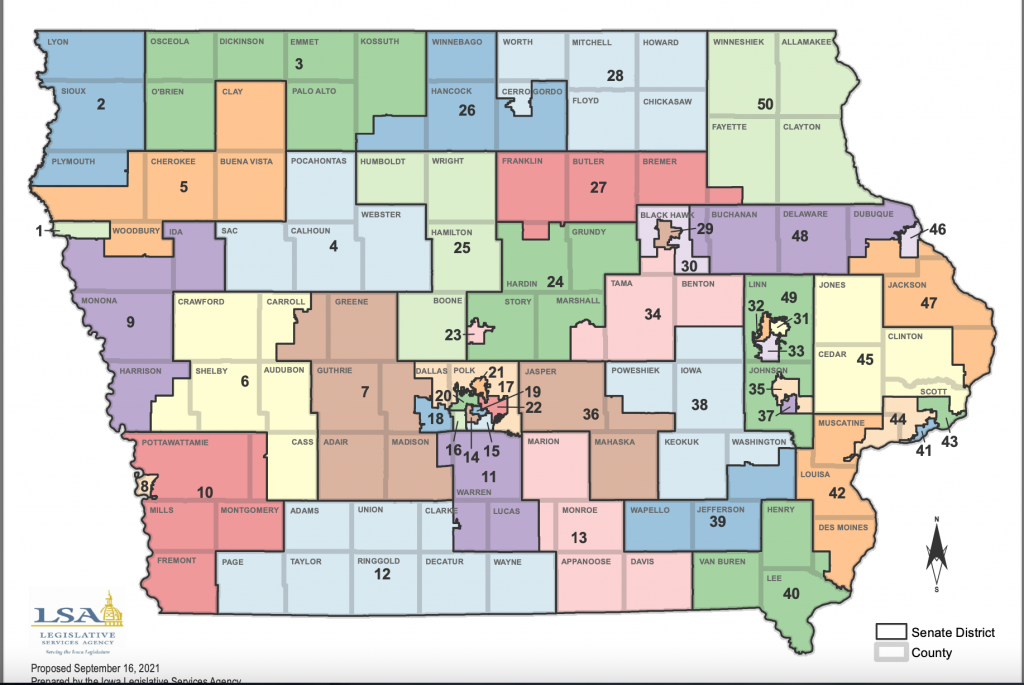
Iowa House District Map:
